MARK FRIDVALSZKI |
| →News |
→Text |
| →Bio |
→Download portfolio |
| →Contact |
|
| Works … |
|
| →2025 |
|
| →2024 |
→2020 |
| →2023 |
→2019 |
| →2022 |
→2018 |
| ↓2021 |
→>2017 |
| |
|
| →Technologie und das Unheimliche |
→Instagram |
| |
|
| 2021 |
| |
| Ad Futura, Ad Inexplorata, solo show, ISBN books+gallery, Budapest |
| Thanks to: Előd Halász, →Àbáse (Szabolcs Bognár); photos by Dávid Biró |
| |
When we think of the present, we often feel as if we were wandering in a dark forest overgrown by dense vegetation, looking for a way out to the light, toward some optimistic future. If we change perspective, leaving the ground behind, observing the events from a bird’s eye view, we notice that a thick, grey cloud appears on the skyline that seems impenetrable, covering the horizon as a spherical roof. People in different regions live their lives within this planetary dome, according to the unquestionable norms of capitalist hegemony. The grey cloud is descending, displacing the space between the surface and itself. In this suffocating environment with no oxygen, our brain functions are slowing down. We can feel this happening and we would like to dispel the fog, but we have neither the energy nor the imagination left to rewrite the rules of the game or the chance for a breakthrough. Thus, as we think about the possibilities of breaking through the grey clouds, we are confronted with the fact that the system, like a colorless, pungent-smelling gas, fills all space. For a long time now, I have been desperately looking for the tools, ideas, and practices that can still break through the wall blocking our future perspectives in the hope that the ’’energizing light’’ shines through. Because they exist, for now fragmented, but we must remain optimistic. Against a sterile realistic system, fantasy, visions, critical attitudes or optimism can already be a working energy.
In my opinion, in order to embrace an optimistic attitude, it is inevitable to review some of the crucial points of the present, that postmodern irony, cynicism, individualism, or doomsday cult are not expedient in this way. In order for us to develop a real belief that we can reconnect to one another in the hope of a new era, we must realize again that even if history has ended, the unimaginable still exists, and indeed there is always a future! – Mark Fridvalszki |
| |
The displayed orange version of the CWU-1/P overall was manufactured by Olive Hill Manufacturing Co.—according to the label on October 24, 1960—for experimental and test pilots of the U.S. Air Force. The brilliant color played an important role during unfortunate missions for proper perceptibility. Test pilots have to work with the most innovative technologies currently being developed on the design tables, with human tolerance, the limits of physics, and their own existence on experimental aircrafts or structures used for space travel. With regard to the installation, the emphasis of the work is not about the military-industrial complex, the overall is a metaphor for the confrontation with the unknown, the excess of our own limits, in this case the barricades of our imagination, the limits of our fantasies about the future. The patches such as ’’Ad Futura, Ad Inexplorata’’ (Into the Future, Into the Unknown), ’’Towards the Light, Forward and Up’’ and the other motifs are all inspiring, encouraging to take spiritual action, hijacking the sense of reality, transcending it.
Just like the motto ’’Get High’’ on the wallpaper, which also carries double meaning, it covers something like breaking high or lifting off. However in slang—and this is the more commonly used interpretation—it means a state of altered consciousness revived by stimulants. The gentle blue background in terms of cyan-magenta-yellow-black paint ratios for offset printing is the so-called ’’Blue Sky’’ tone. The multicolored circles are components of the separated ’’white light’’ visible to the human eye. The font called Frankfurter (1970) can be familiar from vinyl covers, the appealing message, the blueness, the white light in the middle of the color wheel, and the didactical arrangement of the prints—like a mantra—displays characteristics of concert posters.
The sounds of the Fender Rhodes 73 were recorded during a composing process by Àbáse (Szabolcs Bognár), who is a producer, jazz pianist and percussionist living in Berlin. It is a sensitive, spontaneous search for the right sounds and harmonies, the moments when the musician is taking the risk, does not even know where the breakthrough is during the improvisation, is that the right path at all?
So what the exhibition suggests is that the spirit and creative energy imprisoned by the daily routine of late capitalism need to be unleashed. Whether arts, altered states of consciousness, intellectual challenge and experimentation, the spontaneity and brave risk-taking of creative work are all possibilities that can break the boundaries of the current system. They can make it possible for us to imagine the future again, to be able to fight ourselves through that grey cloud. |
| |
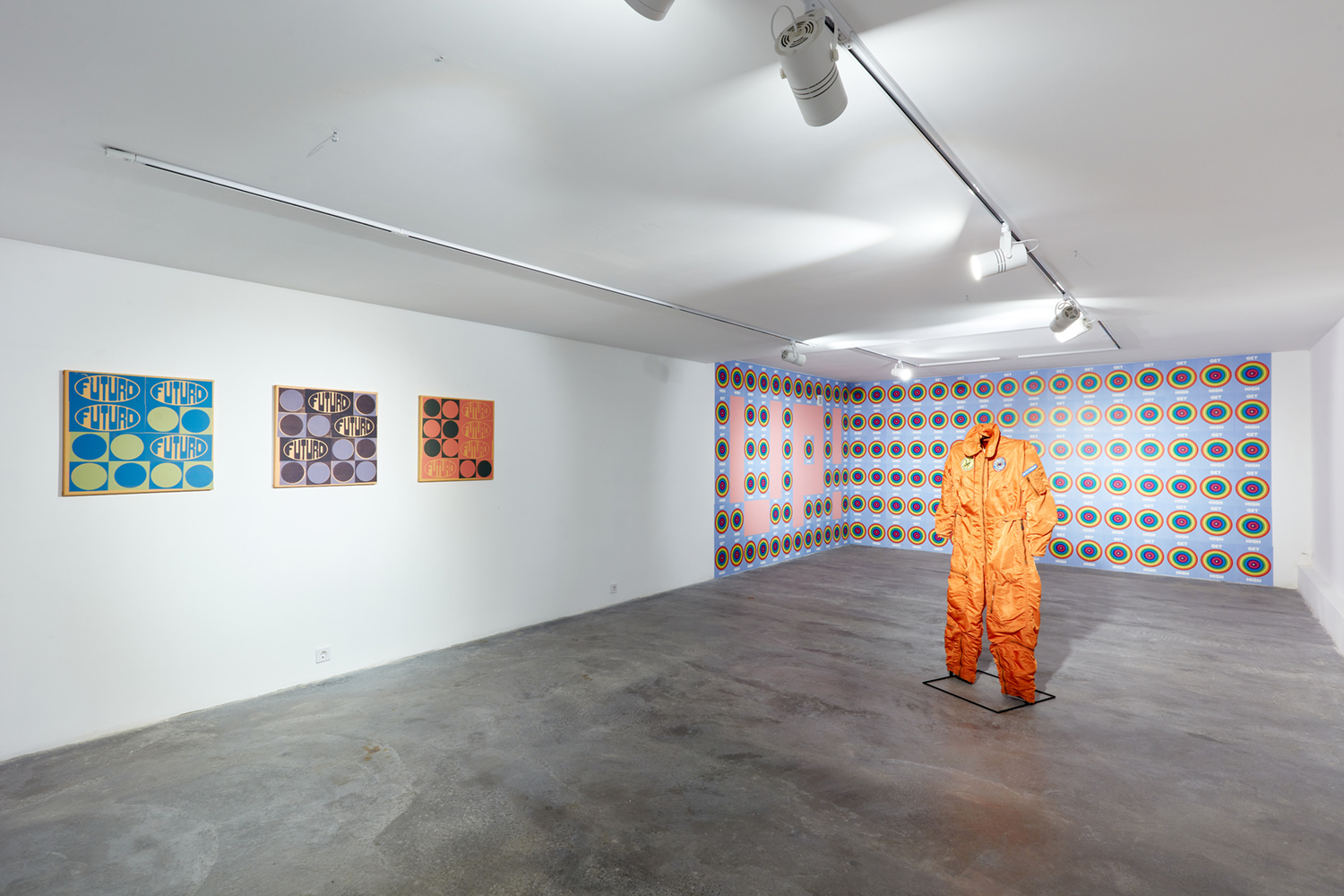 |
| |
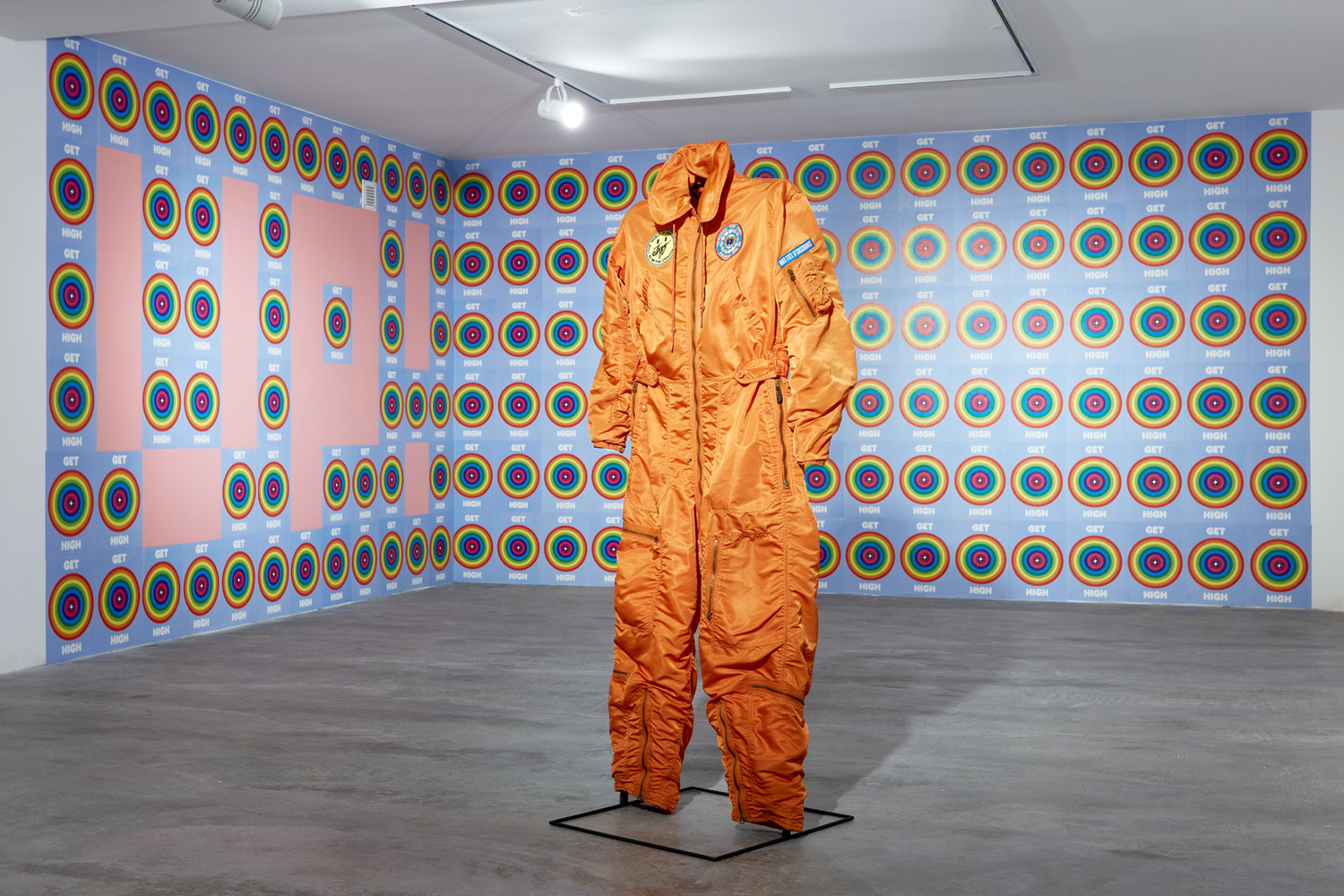 |
| |
| Ad Futura, Ad Inexplorata, 2021, CWU-1/P overall, patches, metal construction, 160x60x60 cm |
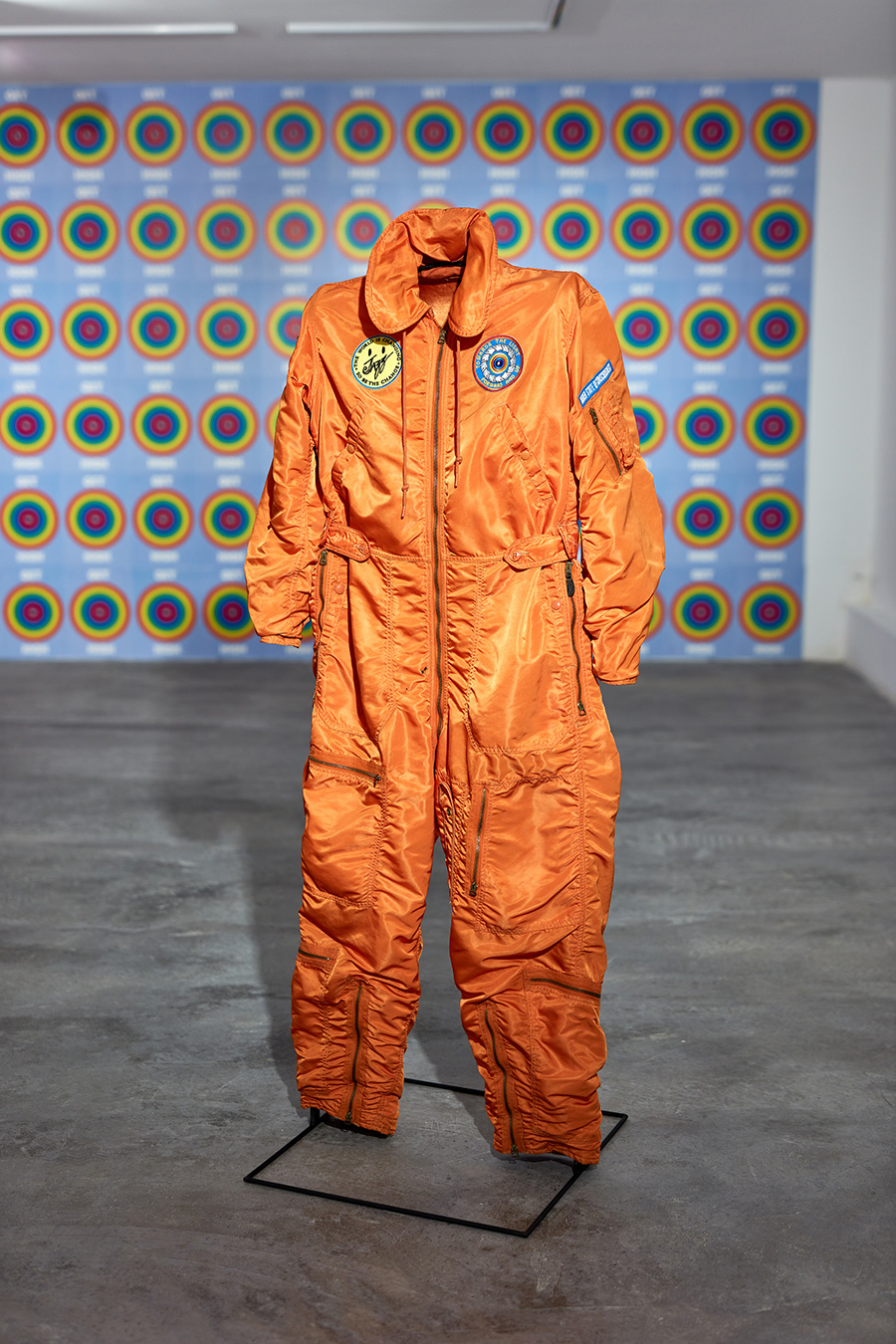 |
| |
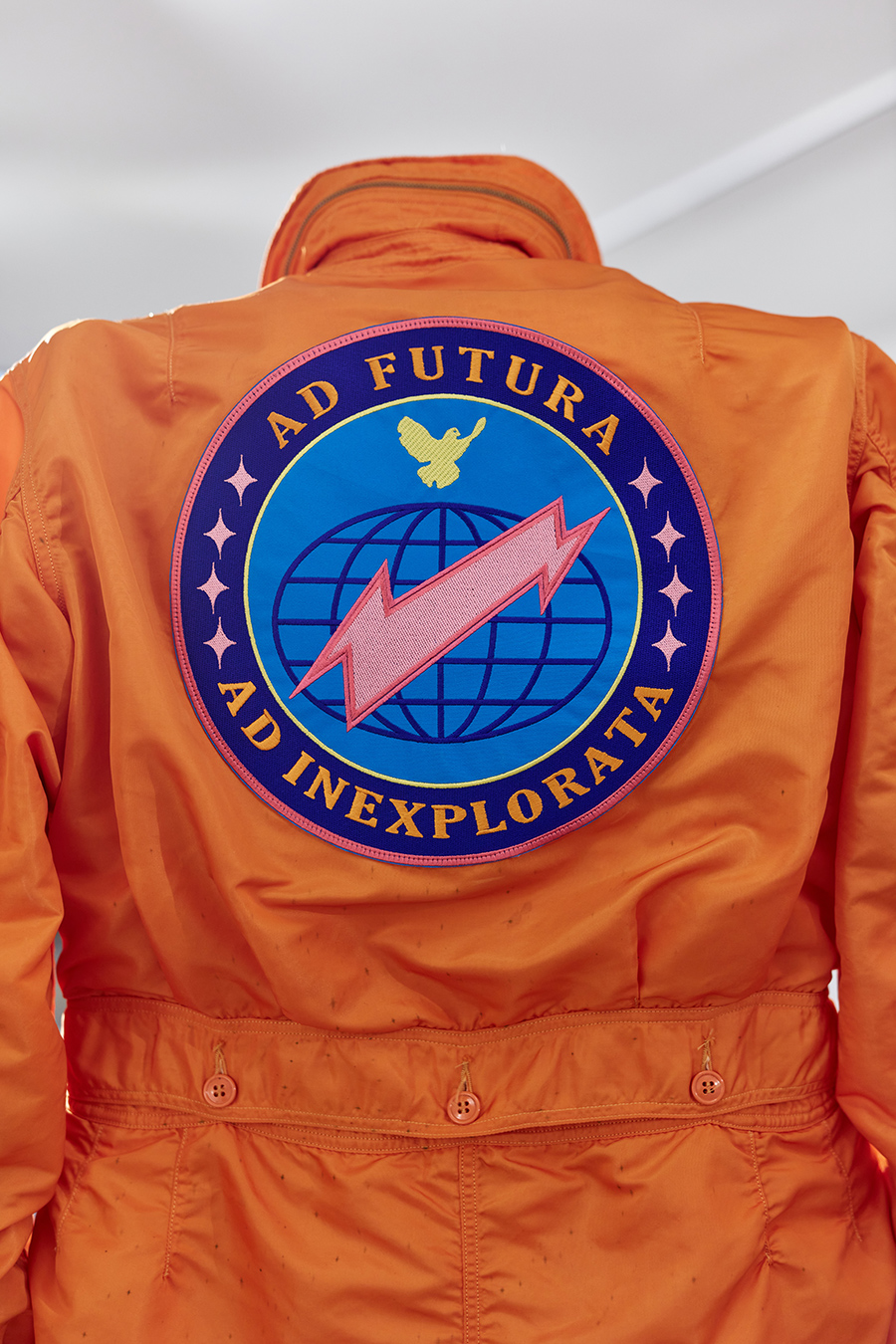 |
| |
| Get High, 2021, digital print on paper, 800x250 cm |
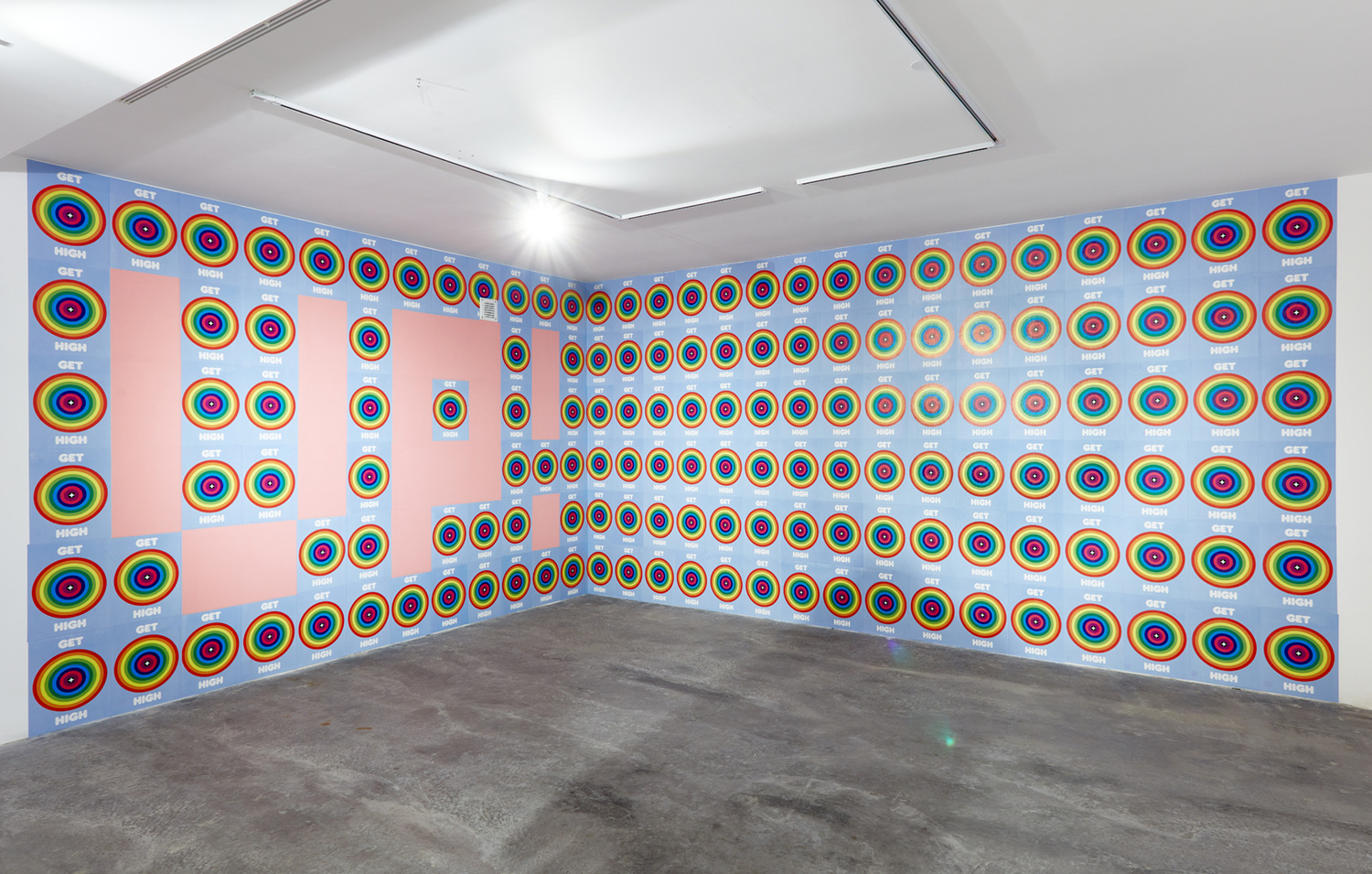 |
| |
Ad Futuro I, II, III, 2021, silkscreen print, acrylic, canvas, each 60x60 cm
|
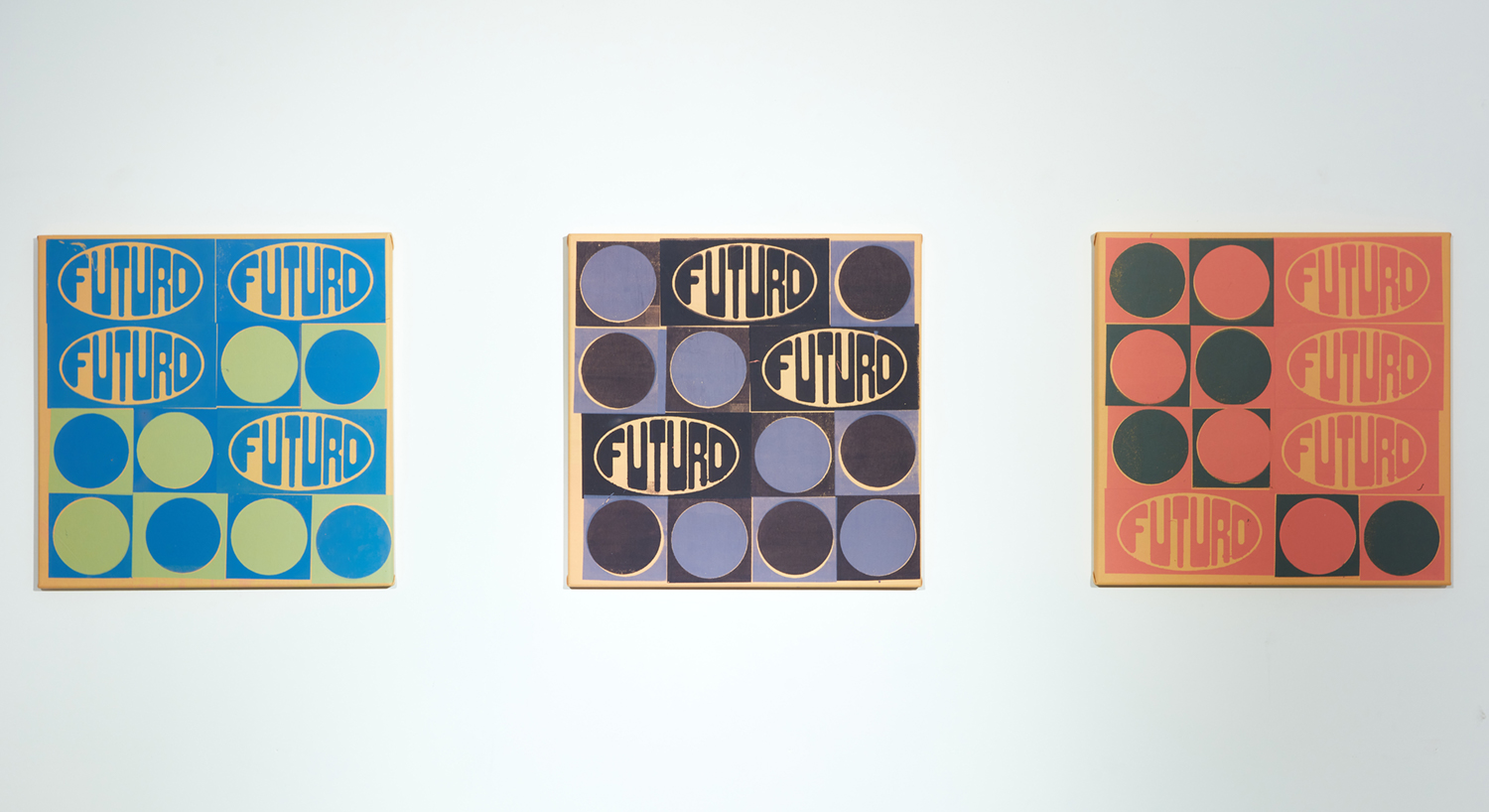 |
| |
| Future Forms I, 2021, gouache on aged paper, 21x29,7 cm |
 |
| |
| High on Rhodes, 2021, improvisation by Àbáse (Szabolcs Bognár), cassette tape, 29’45’’ |
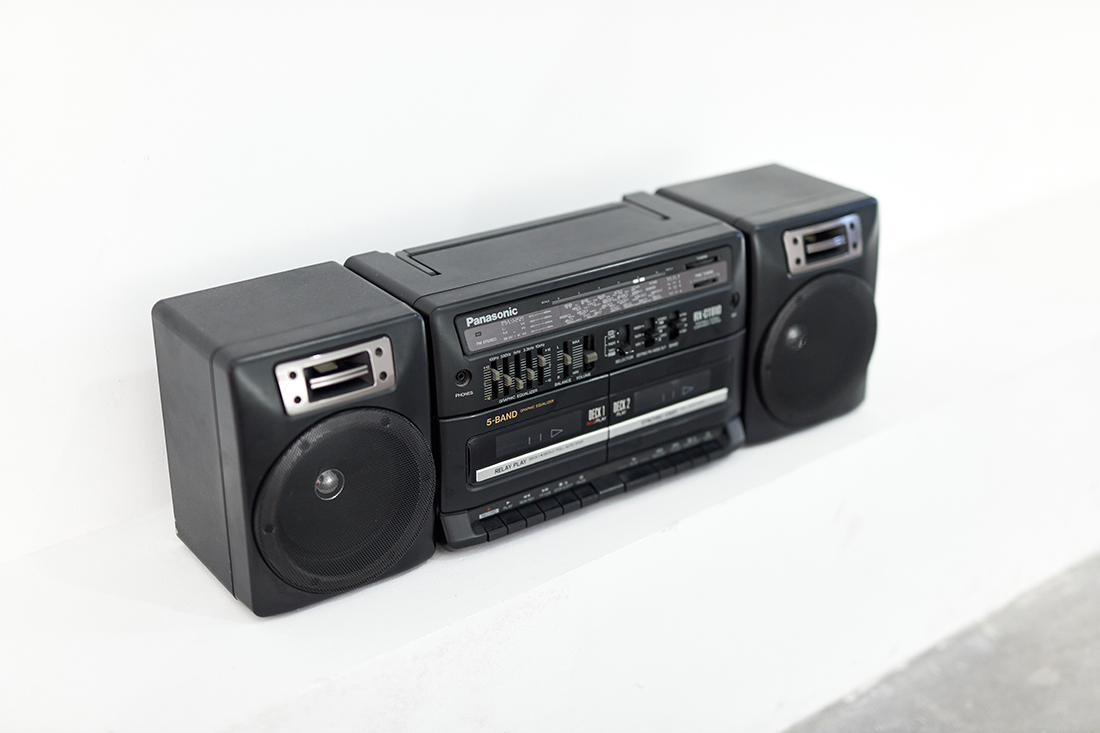 |
| |
| ↑Top |
© Mark Fridvalszki 2016–2024 |







